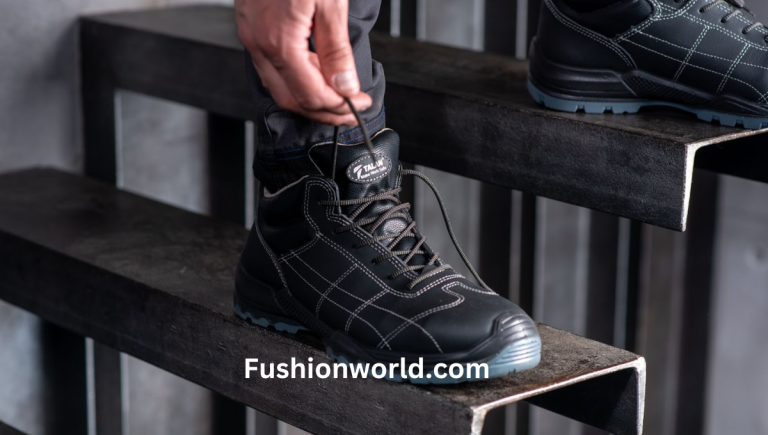Special footwear (safety shoes) refers to personal protective equipment. It is an indispensable element for the outfit of a construction worker, a worker in a machine shop, metallurgical and chemical industry. Its task is to protect feet from mechanical, thermal damage, electrical discharges, but at the same time it should remain comfortable, convenient and stylish.
In this article specialists from Talan safety shoes in UAE — the large manufacturer of personal protective equipment will tell how to choose quality footwear for work, camping, sport, farming, and other outdoor activities.
What is important when you buy safety shoes?
The employee of the enterprise (customer) must know and take into account the specifics of production, the requirements for protective equipment.
Experts in producing high-quality safety shoes advice:
- Determine your needs — think about what functional features you require for your work (e.g. impact protection, water resistance, anti-slip sole).
- Choose the right design based on your work environment — if you work in construction, woodworking, heavy industry, your feet need to be protected from impact, falling bulky objects. Pay attention to the underfoot and the presence of anti-puncture insoles.
The former are currently made of composite materials, aluminum inserts are allowed. The underfoot should protect the foot from the fall of an object weighing 20 kg from a height of 1 m. In other words, if you remember your physics course — from an impact with a force of about 200 kg/m.
Anti-puncture insoles protect the sole from sharp objects — nails, screws, chips. They are made of Kevlar plates.
- Quality materials — shoes should be made of leather or breathable synthetics, withstand increased loads and temperatures.
The sole — optimally made of polyurethane. This is a durable, but elastic and flexible material. The footbeds — necessarily anatomically shaped, must hold the foot in a physiological position, not slip. This will further reduce the risk of varicose veins in workers who spend long periods of time at machines, slips and falls.
Pay attention to the material from which the shank is made. The best option is natural leather, yuft with combined tanning. It is wear-resistant and not subject to the action of chemical reagents. Chrome shoes are reliable, beautiful, durable, but expensive.
Leather is practically not used for the production of PPE, some parts can be made of it. But in general, it is advisable to refuse from such shoes.
Rubber — protects feet from water, reduces the risk of electric shock. But feet in such shoes do not breathe, so use them briefly to perform a certain operation.
- Comfort and convenience — measure the shoes and make sure they fit comfortably and do not chafe. In addition, pay attention to the temperature regime. Protective footwear should withstand temperature differences from -15 to +30. Choose PPE with multi-layer insulation and taking into account the season.
- Quality of fittings — there should be no creases, no pins, all elements should be securely fastened together.
- Protective and water-repellent properties — make sure that the shoes have the necessary protective properties in accordance with safety regulations. The features of each product are described in the DSTU of Ukraine.
- Size and fit — make sure that the chosen size fits you and that the shoe locks the foot well. Don’t expect it to wear out and fit your foot. It should be immediately comfortable, it should not stiffen your movements or chafe.
- Height of protective boots — they must necessarily cover the ankle, for metallurgical and heavy industry enterprises it is optimal to choose shoes up to the knee (boot height 35 cm).
- Thermal protection — special footwear must withstand elevated temperatures. The upper part up to 150 degrees, the sole — up to 160o C. If you work with combustible materials, this figure increases to 300 degrees. Boots should withstand at least 1 minute at this temperature without burning, melting.
- Availability of labels and certificates — the first is located on the inside of the boots, they indicate the properties, information about the manufacturer, class of PPE. The presence of a certificate is a guarantee of the quality of the product, compliance with its stated characteristics.
And the last tip — study forums, manufacturers’ offers, various ratings of personal protective equipment. The cost of quality footwear of this class is higher than ordinary everyday boots. Therefore, it is better to pay for quality PPE than to treat a work injury.

